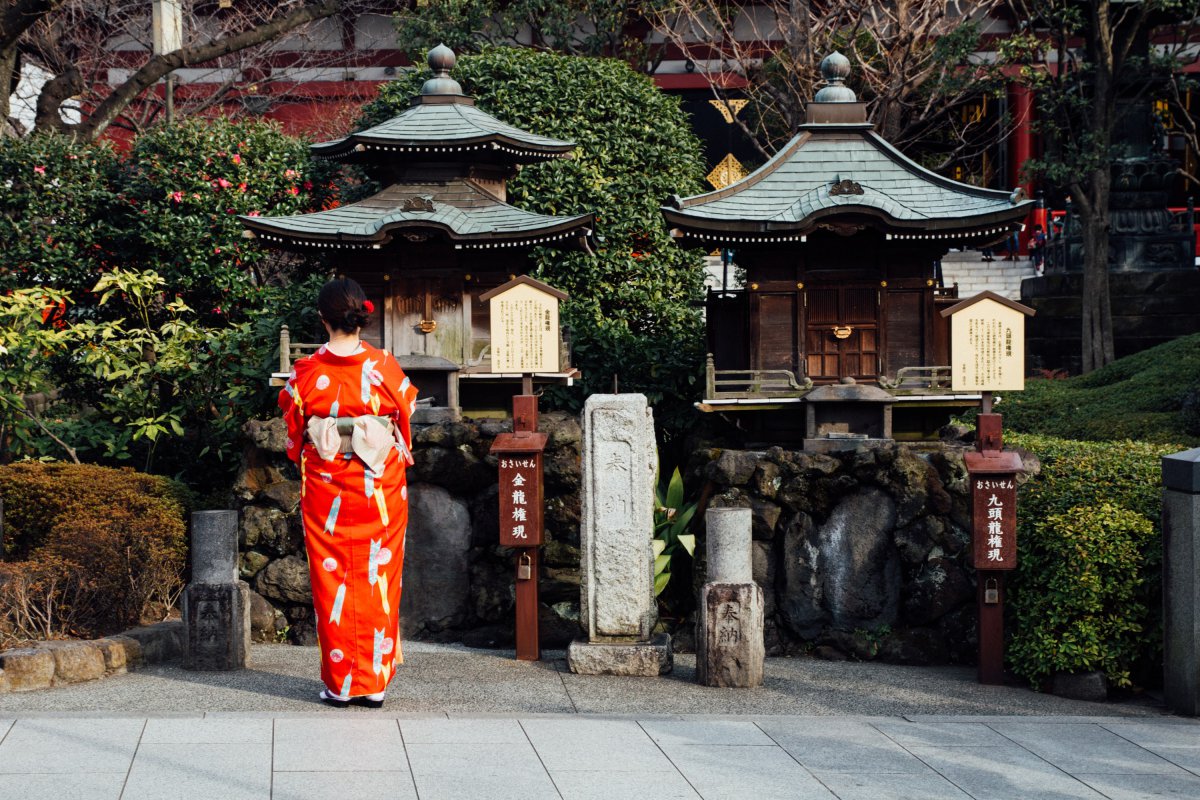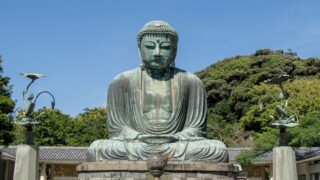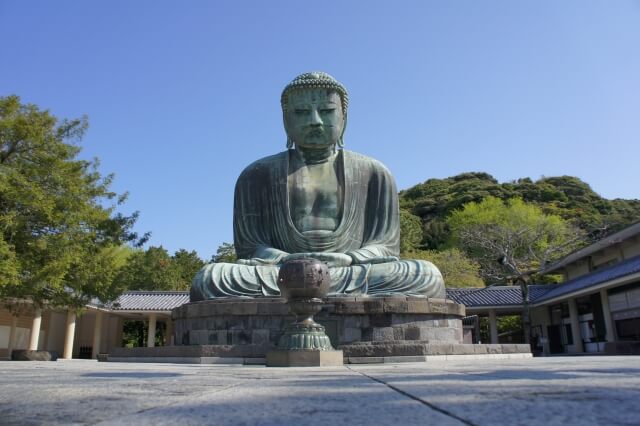Temples and shrines are undoubtedly among the most popular tourist attractions in Japan especially for foreign tourists. Besides often being beautiful structures, shrines and temples are both considered as symbolic spots that allow you to learn the cultural and religious aspects of the country while appreciating the sacred atmosphere and historical structures. Many people, however, often get confused as they seem similar even though each of them represent two totally different religions: Shintoism and Buddhism. Shintoism and Buddhism are the two main religion in Japan, that co-exist peacefully these days. In this article, we help you understand the differences and similarities between Shintoism and Buddhism and distinguish temples from shrines in Japan.

- 1. Differences between Shintoism and Buddhism
- 2. Shintoism in Japan
- 3. Shintoism and shrines
- 4. Buddhism in Japan
- 5. Buddhism and temples
- 6. Differences between shrines and temples
- 7. How to pay a visit & pray at shrines and temples
1. Differences between Shintoism and Buddhism
In the history of Japan, Buddhism and Shintoism were closely knit together, and there are rituals where forms of Shinto and Buddhism are both mixed. Hence, it can be difficult to recognize the differences between the two. But, even though Buddhism and Shintoism coexist peacefully, there are many differences between them. Here is a simple list of differences between Shintoism and Buddhism in Japan that help you recognize shrines from temples and understand the two beliefs better.
| Shintoism | Buddhism | |
| God | 8 million deities | Buddha |
| Purpose | Animism, wish for family and local community | Protection of the nation, end suffering and become enlightened |
| Ritual Site | Shrines | Temples |
| Canon | N/A | Sutra |
| Origin | Japan | India |
| Training | N/A | Strict training to attain enlightenment |
The purpose and belief between these two religions are very different. Shintoism is based on the belief that if people dedicate themselves to the deities and lead honest lives, they will be blessed. At the same time, they have to console the souls of angry deities to prevent the natural disasters.
Festivals that are held annually are contributed to the deities and pray for a good harvest or appreciate the year’s peace.
On the other hand, Buddhism is the way toward enlightenment. In Buddhism, people think living is suffering, and the Buddhists pursue deliverance to withdraw from the cycle of reincarnation and live peacefully in heaven.
Ennichi is similar to the shinto festivals but for a different purpose. It is held at the temple to celebrate the dates associated with deities or Buddha, initially it started based on the belief that if worshipers visit the temple on these days, you can be rewarded. Today on Ennichi, there are many stalls at the site of the temple. This tradition started in the Edo period since the merchants started to open the market around these special days.
2. Shintoism in Japan
Shintoism is a religious faith that is indigenous to Japan. The origin remains unclear, but it has a long history and originated naturally through an ancient lifestyle strongly related to nature. Ancient people had a close relationship with nature as they relied on it heavily in several aspects of their daily lives, for example hunting for food. It later developed as an ethnic religion that regards everything in nature as a God, including the sun, moon, mountains, sea, fire, and so on. This attribution of a living soul to plants, inanimate objects, and natural phenomena is called animism. Shinto can be translated as ‘the way of gods’ and mainly worships the gods that can be seen in natural phenomena and everything around us. Shinto tradition states that there are over eight million gods (kami’s) and there is no singular main god nor scripture unlike the other regions.
3. Shintoism and shrines
There is a range of rituals that have been carried out over centuries in Shintoism. Shrines are the religious sites where people come to pray. The entire site of the shrine is believed to be where the gods rest and that is why once people step into the site, they tend to show their respect to the deities of Shintoism. Considering the fact that the shrine was originally built where the rock or tree that is believed to embody the deity is located, it’s natural to think the whole site is sacred.
After passing through the Torii gates, the iconic gates usually painted in red standing at the entrance of shrines, you find yourself in the sacred area, close to the deities. At the entrance of shrines you can often find statues of foxes, they are generally considered as messengers of the God.
At the shrine, you can’t see Goshintai, the object of worship. Visiting a shrine is not only for those who believe in Shintoism, however. Shrines are open to everyone regardless of religious beliefs and an increasing number of people visit shrines for several purposes such as sightseeing or Hatsumode praying for a great new year on New Year’s Day. In most cases, you don’t need to pay the admission fee to enter the shrine grounds and they are open 24 hours.
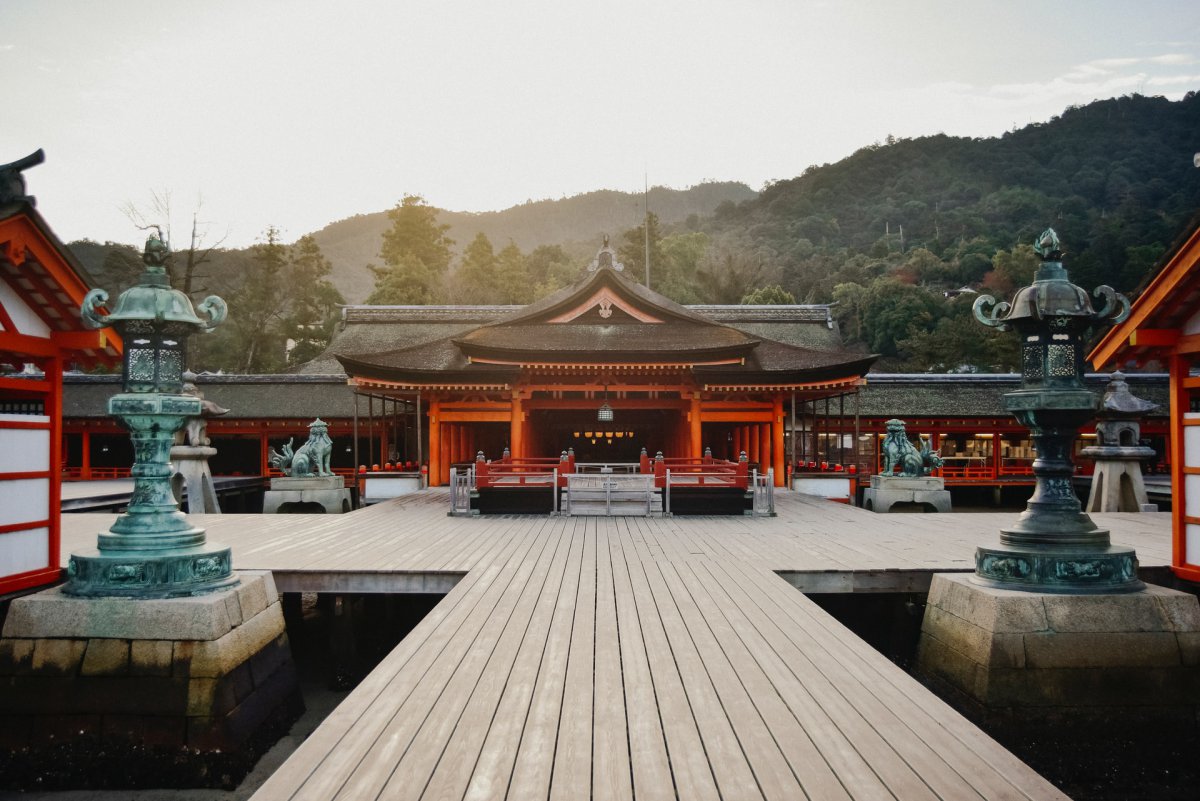
4. Buddhism in Japan
Buddhism was brought to Japan in the 6th century (552 according to the official record in Nihon Shoki), coming originally from India. At first, Buddhism wasn’t accepted widely as many people at that time worshiped Shintoism already and were skeptical towards the new religion from outside Japan. It led to a conflict between wealthy and powerful nobles such as the Mononobe family who were against the spread of Buddhism, and the Soga family, a strong proponent of Buddhism.
The situation changed drastically after the emperor Suiko, who had a strong belief in Buddhism, officially enthroned in 592. After that, Buddhism started to have a huge influence on the development of the whole society with the strong support of the emperor and other authorities. It resulted in spreading around the country with countless numbers of temples built everywhere.
5. Buddhism and temples
A temple is where the statue of Buddha, considered to embody the presence of the Buddha, is stored and when you visit there you can see the statue unlike shrines. Buddha refers to a founder of Buddhism, and often cited as a God in Buddhism relevant to the Christ in Christianity. A temple is also a residence and training center for monks aiming to reach enlightenment through years of hard training.
There are some customs related to Buddhism in Japan such as Obon in August, the days when it’s believed the deceased spirits come back home.
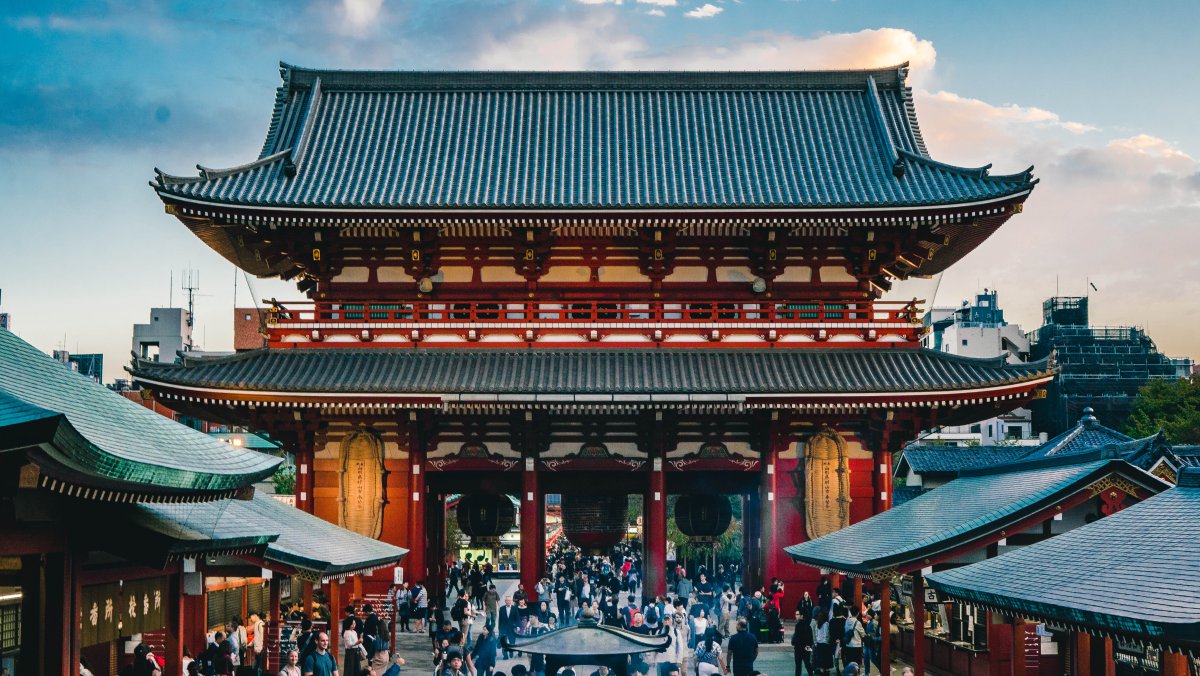
6. Differences between shrines and temples
There are about 80,000 Shinto shrines and 75,000 Buddhist temples all over Japan and there are several differences between the two places of worship in terms of their appearance, how to pray and some other unique features.
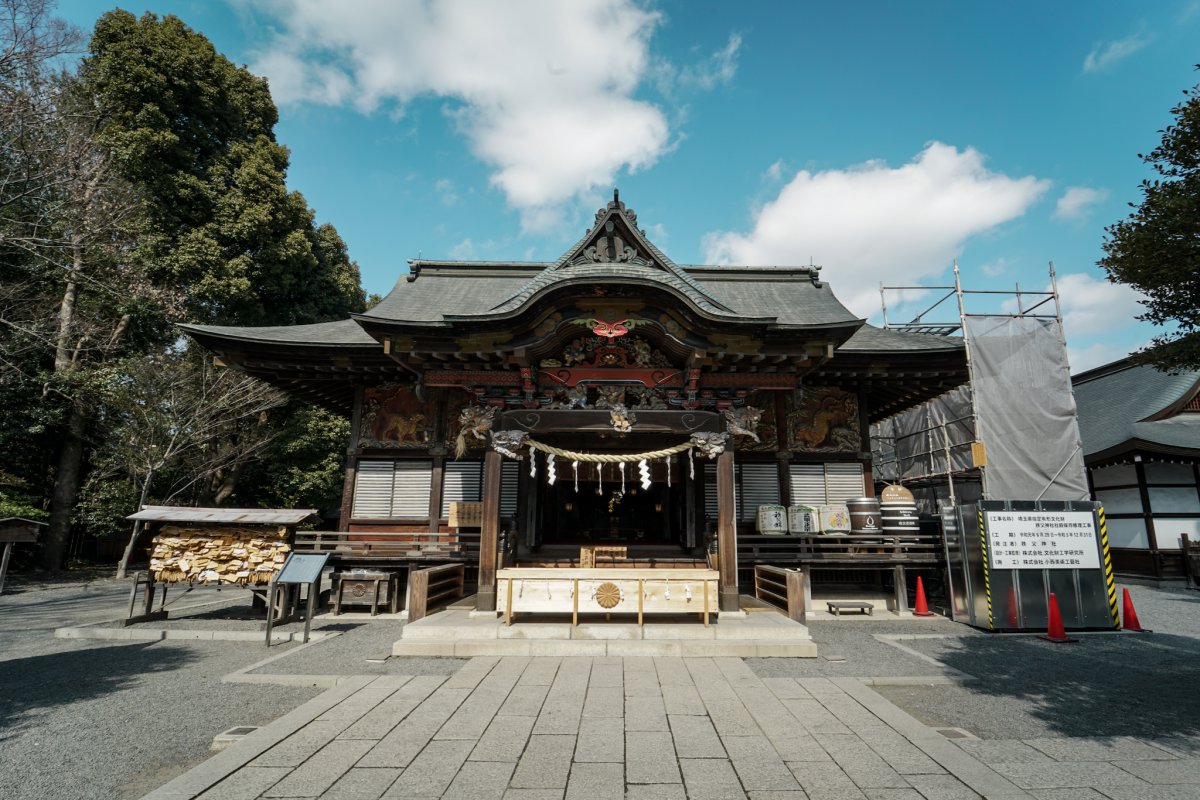

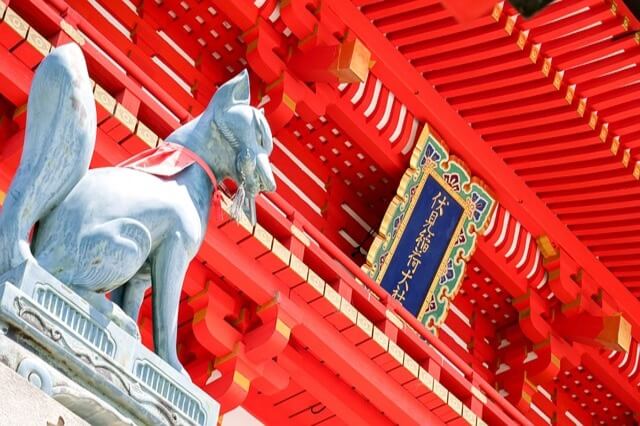
A shrine is also known as jinja in Japanese and a symbol for Shintoism. The easiest way to recognise a shrine is the iconic red Torii gate that marks the transition from the mundane to the sacred world. In addition, you can see two lion or dog shaped statues at the entrance of the shrine known as Komainu. These statues are said to scare off the evil spirits.
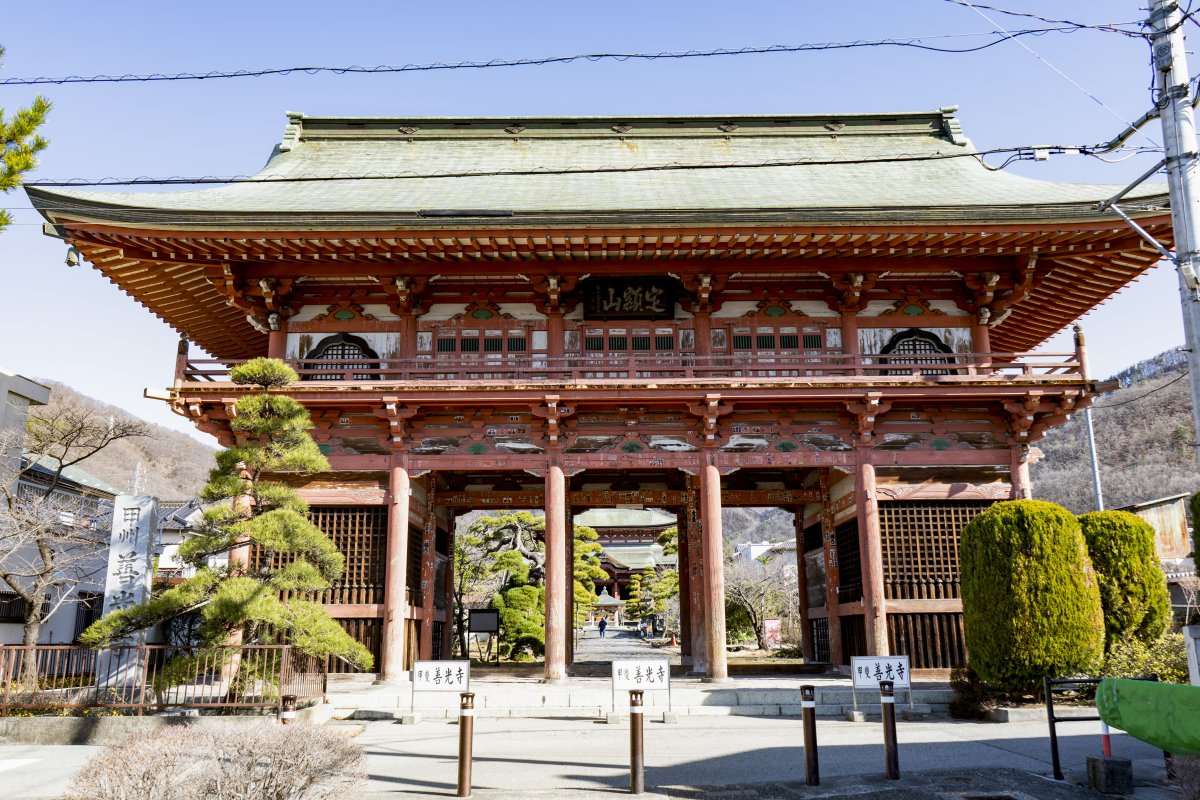
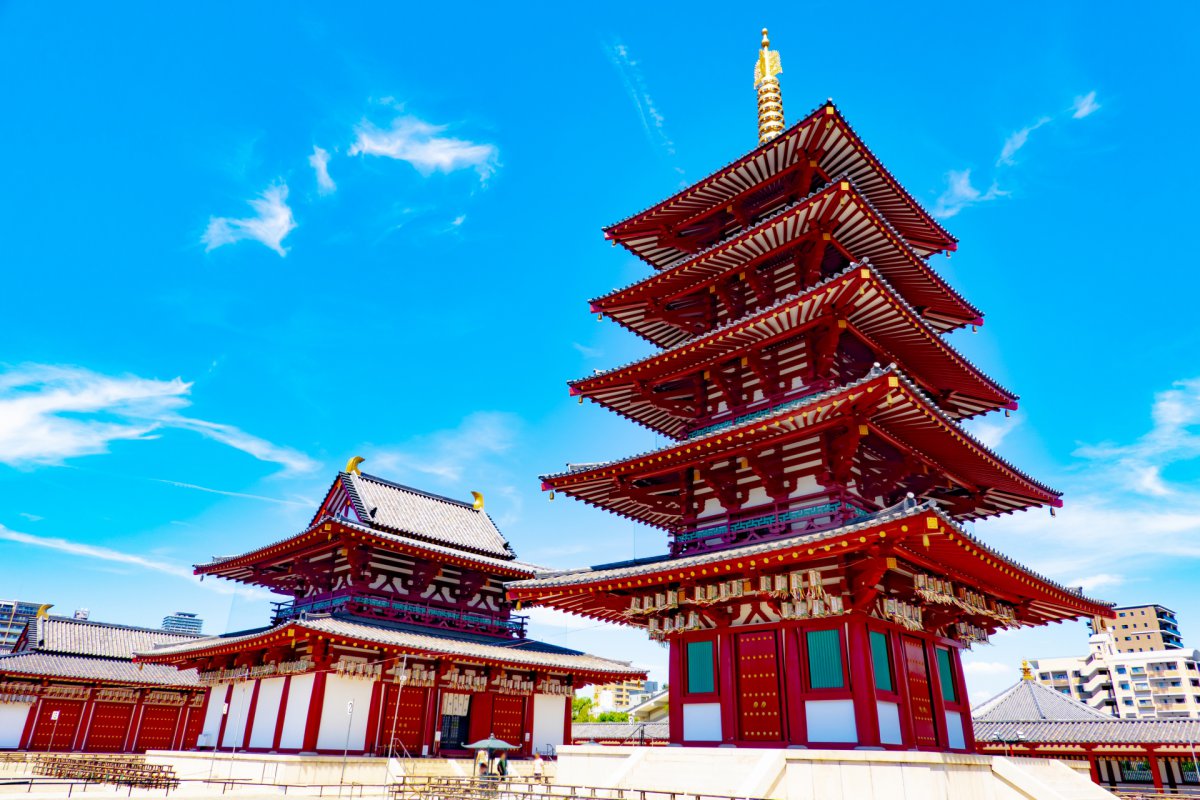

A temple, or tera in Japanese, a place of worship for Buddhism. A temple will also have a temple gate, that is often much more complicated than the Torii gates of shrines. Another feature of a temple is the five storied pagoda, also known as stupa. Nio statues, displaying muscular guardians to scare off the bad spirits, will welcome you to the temple together with a large incense burner called Jokoro and several other statues. Sometimes, you also find a cemetary next to the temple.
7. How to pay a visit & pray at shrines and temples
Before you visit shrines and temples in Japan, it is wise to learn the basic manners of praying at both places of worship. It helps you behave appropriately without getting confused or embarrassed.
How to pray at shrines
- Throw a coin into a wooden box (generally 10 or 5 yen)
- Ring the bell
- Bow deeply twice
- Clap your hands twice
- Pray & make a wish and bow deeply again
Before praying at the main shrine, make sure to purify yourself at the water basin known as Chōzuya or Temizuya. Note however, that these can also be found at temples and are not an strict indicator of a shrine.

How to use the water basin
- Take the Hishaku ladle and scoop some water.
- Pour water with your right hand over your left.
- Pour water with your left hand over your right.
- Pour water into your left hand and use it to rinse your mouth.
- Pour water over your left hand. Then turn the dipper upright so that the remaining water rinses the handle and place it back.

How to pray at temples
- Throw a coin into a wooden box (generally 10 or 5 yen)
- Ring the bell hanging
- Put your palms together silently and bow deeply
- Pray and make a wish
- Bow deeply again
Never clap your hands at temples as it is considered rude. The reason you clap your hands at shinto is to call for the kami, but because Buddha is already present, there is no need to call for Buddha. Just put your hands together in front of your body and pray silently instead. Purification at a temple is often done by covering yourself in the incense smoke from the Jokoro. It is widely believed that incense smoke has a healing effect.
8. Shinbutsu-Shugo, the mix of these two religions
Since the arrival of Buddhism in Japan during the 6th century, there was a reconstruction between the two different religions which encouraged them to merge together and create a new religious system. This is called Shinbutsu-Shugo, which regards them as a single belief system. According to Shinbutsu-Shugo beliefs, temples and shrines were sometimes built on the same premises, For example in Asakusa, Tokyo, where right next to the famous Sensoji Shrine you can find Nishinomiya Inari shrine accompanied by a Torii gate.
Shrine-temples were known as jingu-ji and the fusion of Buddhism and Shintoism continued until the Meiji Period, when the Meiji government declared the formal separation of the two religions. However, the two religions still influence each other and practice side by side peacefully.

For example, hatsumode, one of the biggest annual events that originates in Japan. Hatsumode is the first visit of the year to shrines or temples to make a wish for the new year. You might have heard that Hatsumode is only for shrines, but Japanese people actually visit temples as well, and there is no big difference! They are both considered as a sacred place and an ideal spot to wish for the good fortunes for the new year regardless of personal religious background.
It is often said that Japanese people are born Shinto and that they die Buddhist and many happy rituals are regarded as shinto rituals, whereas sad occasions are seen as Buddhist rituals. For example, weddings are mostly celebrated at shrines whereas funerals generally are held at temples.
Japan Wonder Travel Tours
Japan Wonder Travel is a travel agency that offers guided tours throughout Japan.
From private walking tours to delicious Food and Drink tours, we can help you organize the best tours just for you! If you want to explore Japan and learn more about the history and backstories of each area you are visiting, our knowledgeable and friendly English speaking guides will happily take you to the best spots!
In addition, we can provide you with any assistance you may need for your upcoming trip to Japan, so please feel free to contact us if yu have any questions or need some help!
▶Tokyo Tsukiji Fish Market Food and Drink Tour
Explore the most lively and popular fish market in Tokyo and try some of the local’s favorite street foods and sake with one of our friendly and knowledgeable English speaking guides!

▶Tokyo 1–Day Highlights Private Walking Tour (8 Hours)
There’s no better way to explore an area than taking a tour with a knowledgeable local guide. You will have the chance to learn about the history and interesting background stories of Tokyo, as well as discover some hidden gems which can be hard to do without a guide.

▶Mt. Fuji Day Trip Bus Tour from Tokyo
Experience the breathtaking views of Mt. Fuji by visiting the highlights of the area on our guided sightseeing bus tour! Departing from Shinjuku in central Tokyo, you can travel comfortably to all of the best spots in the area by bus.

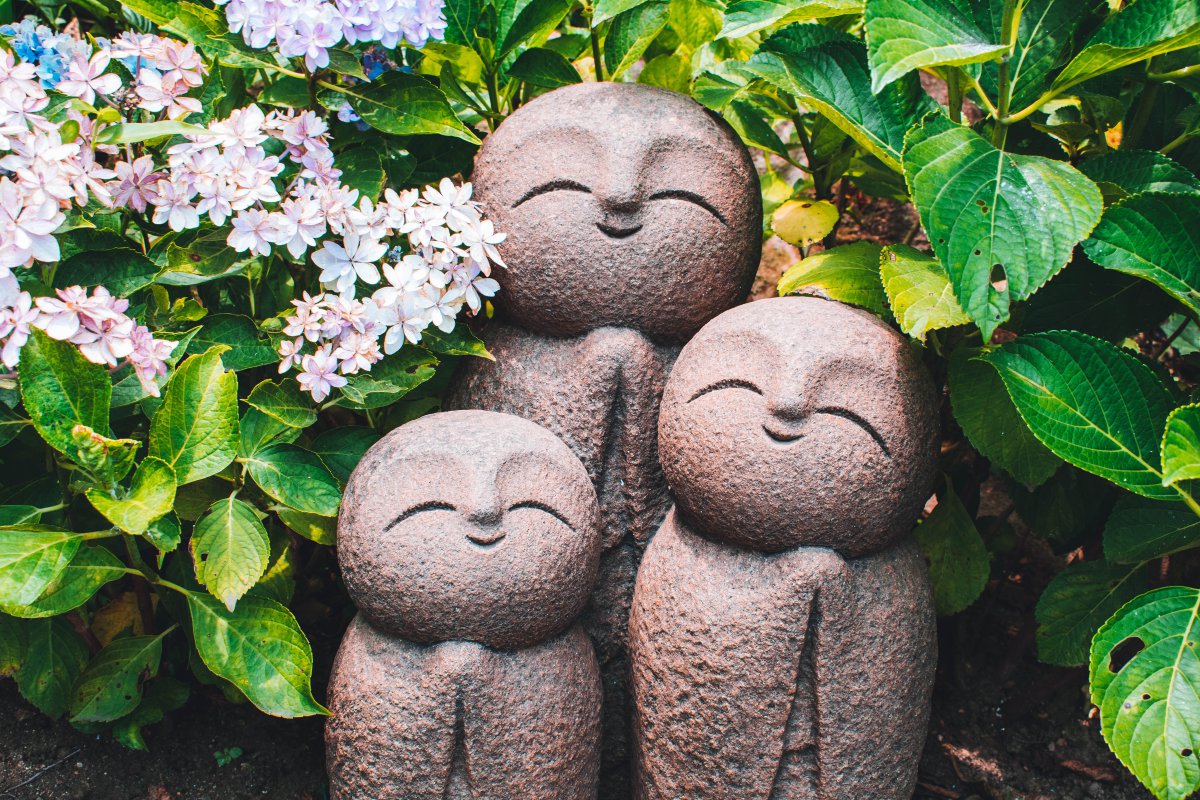
Shintoism and Buddhism play a significant role in the present day of Japan in several aspects. Many people observe both Shintoism and Buddhism and subsequently visit both shrines and temples in their life, albeit for different occasions. You might not easily spot the existence of Shintoism and Buddhism at first sight, as religious beliefs are usually not shown clearly in public. But both Buddha and the 8 million Shinto deities are highly respected and the two beliefs co-exist peacefully together in the society. If you get a chance to visit both shrines and temples during your time in Japan, remember what you learned today and compare the differences between them!
Follow us on Instagram or Facebook for more travel inspiration. Or tag us to get featured!
Happy traveling!
Stay informed of the best travel tips to Japan, the most exciting things to do and see, and the top experiences to have with the Japan Wonder Travel Newsletter. Every week we’ll introduce you to our latest content.
